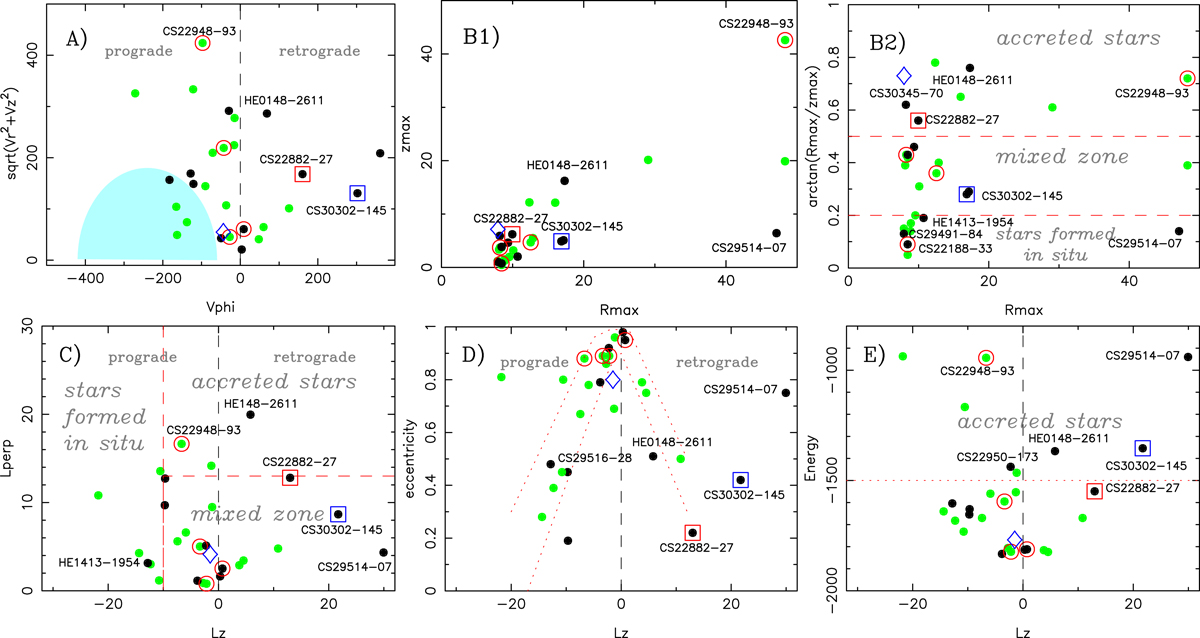Fig. 9.

Download original image
Characteristics of the orbital kinematics. Our stars are represented by black dots, and the dwarfs of the First Stars by green dots. The Li-poor stars are circles in red, the Li-free star by a red square, and the low-α star by a blue square. The other very metal-poor and low-α star HE 1424-0241 (Cohen et al. 2007) is indicated by an open blue diamond. In panel A, the blue zone shows the location of the disc stars in this diagram. In panels C and E, the location occupied mainly by accreted stars is indicated. In panel D, the dotted lines delimit the region in which the Nissen & Schuster (2010) stars are located. Units of the plotted quantities are velocities in km s−1, distances in kpc, angular momenta in 100 kpc km s−1, and energy in 100 km2 s−2. It is important to note that in the zone marked as containing “accreted stars”, e.g., there is only a high probability that the stars in this zone are accreted, and this is the same for the zone marked “in situ”. Exceptions may exist (Schuster et al. 2012).
Current usage metrics show cumulative count of Article Views (full-text article views including HTML views, PDF and ePub downloads, according to the available data) and Abstracts Views on Vision4Press platform.
Data correspond to usage on the plateform after 2015. The current usage metrics is available 48-96 hours after online publication and is updated daily on week days.
Initial download of the metrics may take a while.


